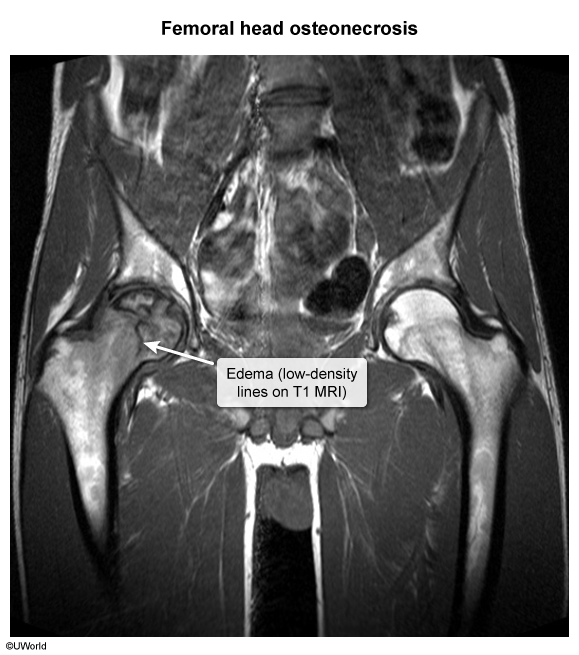Epidemiology
Etiology
Though often idiopathic, several traumatic and atraumatic factors may contribute to the development of osteonecrosis.
- Atraumatic factors
- Glucocorticoid use (35–40% of cases)
- Alcohol use disorder (20–40% of cases)
- Legg-Calvé-Perthes
- Hemoglobinopathies (e.g., sickle cell disease)
- Autoimmune diseases (e.g., SLE, antiphospholipid syndrome)
- Pancreatitis
- Infection
- Gaucher disease
- Decompression sickness
- Traumatic factors
- Femoral neck fractures, particularly with dislocation
- Femoral head fracture
- Slipped capital femoral epiphysis (SCFE)
Pathophysiology
Ischemic death of bone and marrow in the femoral head due to disruption of the blood supply, primarily from the medial circumflex femoral artery.
Clinical features
Diagnostics
Imaging
- X-ray: best initial test
- Findings
- Cystic and sclerotic changes in the femoral head
- Subchondral collapse
- Flattening of the femoral head
- Findings
- MRI: confirmatory test
- Findings
- Visualization of the interface between necrotic and viable bone

- Visualization of the interface between necrotic and viable bone
- Findings